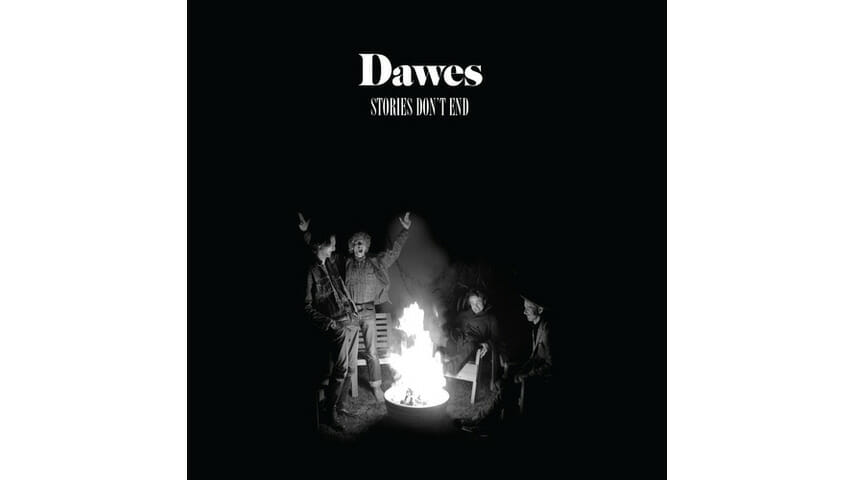
With Stories Don’t End, their third studio album, Dawes aimed to break free from their pigeonholed place in popular music. They’ve been branded ‘70s rock throwbacks: chasing the open-highway Laurel Canyon churn of Jackson Browne, the expansive vocal harmonies of CSNY, the deep-pocket punch of The Band. And that’s a sound that’s served them well: In 2013, they’re the torch-carriers of this old-fashioned sound—even if they don’t want to be. When I interviewed bassist Wylie Gelber a couple weeks back, he recognized that influence—as well as their need to push past it: “That’s our favorite music ever,” he said. “But for this one, we just wanted to push ourselves out of our comfort zone a little bit, working with a new producer and trying to get new sounds.”
And to a degree, that’s exactly what they’ve done. Relocating from their L.A. home-base to the mountains of Asheville, N.C., Dawes worked with producer Jacquire King (Kings of Leon, Norah Jones, Tom Waits), who helped them tweak and expand their vintage writing style, nudging their sound into the 21st century. Stories Don’t End is crisper and more overdubbed, sprawling a tad where the first two albums flowed seamlessly. This is their most intricate music to date, full of colorful detours and surprising instrumental flavors: the ping-ponging psychedelic guitars and out-of-nowhere synth of “Bear Witness,” the ever-shifting bass/drum kit groove on “Someone Will,” the stinging harmonics on “Most People.”
But in spite of these new sonic twists, Dawes ultimately still sound like Dawes. Taylor Goldsmith has a rare gift for subtle character observation—romanticizing the kind of stuff normal people tend to glance over without much thought. On the wonderful “Bear Witness,” he spends a verse analyzing a stoic dog: “Did you notice walking over, at the house down at the corner / There’s a dog behind a window that doesn’t move / I’ve seen him staring in the mornings; I’ve seen him staring in the evenings / As if time stops till his master’s in the room.” On “Someone Will,” he deduces a lover’s romantic turmoil, just from gazing in her eyes.
Few songwriters of Goldsmith’s generation write with that kind of careful attention-to-detail. But sometimes you kinda wish he’d pipe down and let the groove ride. “Most People” peaks with a closing call-and-response vocal pattern, but Goldsmith’s crawling character observations overcrowd the music, wound tightly around the chord changes in a lock-step delivery. He has a warm, expressive voice, but he rarely shows any emotion—emphasizing lyrics over performance, rarely rising above a polite whisper.
“Hey Lover,” a cover of a song by their buddy Blake Mills, offers the band a chance to let their hair down. Over dime-store chord changes, the Goldsmith brothers (including drummer Griffin) trade vocal duties, playfully delivering the track’s spastic lyrics: “When did I decide to grow this beard and gut?” Griffin sings, “Well, I may be white, but I don’t like my people much / But I want to raise with you and watch our younglings hatch / Fuckin’ make the first letters of our first names match.” It’s a welcome respite from the studiousness—and proof that Dawes are serious about moving out of their blue-sky comfort zone.